In our digital age, buzzwords come and go, but few have stuck around and shown as much promise as “blockchain.” You’ve probably heard of it in relation to cryptocurrencies like Bitcoin, but did you know that its applications extend far beyond digital currencies? In this article, we’ll dive deep into the real-world uses of blockchain, shedding light on how this revolutionary technology is reshaping industries and changing the way we think about trust, transparency, and decentralization. Ready to embark on this enlightening journey? Today we’ll unravel the mysteries of blockchain together!
Decoding Blockchain: Exploring its Transformative Impact Across Sectors
Table of Contents
- Understanding the Basics of Blockchain
- Financial Services and Cryptocurrencies
- Supply Chain Management
- Healthcare Sector
- Real Estate Industry
- Voting Systems
- Frequently Asked Questions
- Final Thoughts
- Sources
Understanding the Basics of Blockchain
I’ve had a very close look at the blockchain structure at its core in a Python Environment and I remember thinking to myself, “This thing is Beautiful!”.
Blockchain stands out as a groundbreaking technology that promises to reshape the way we think about data, trust, and decentralization. But what exactly is blockchain, and why is it causing such a stir in various industries?
The Digital Ledger
At its core, blockchain is akin to a digital ledger. However, unlike traditional ledgers that are maintained by a single entity or institution, blockchain operates on a decentralized network of computers. This decentralization is the heart and soul of blockchain, ensuring that no single entity has overarching control or authority over the entire chain.
Blocks and Chains
The term “blockchain” is quite descriptive. Data is stored in ‘blocks’, and as more data is added, more blocks are created. Once a block is filled with data, it’s chronologically and cryptographically linked to the previous block, forming a ‘chain’. This linkage ensures that once data is added to the blockchain, it becomes immutable, meaning it’s nearly impossible to alter without altering all subsequent blocks, which would require the consensus of the majority of the network.
Transparency and Security
One might wonder, with such decentralization, how is data integrity maintained? The answer lies in the consensus mechanisms employed by blockchain networks. Before a transaction is added to a block, it must be verified by multiple nodes (computers) in the network. This verification process ensures that only valid transactions are recorded.
Moreover, every participant in the network has access to the entire blockchain, ensuring unparalleled transparency. This transparency, combined with the cryptographic security measures in place, makes blockchain exceptionally secure against fraudulent activities and hacks.
Smart Contracts
Beyond just recording transactions, blockchain has given rise to the concept of ‘smart contracts’. These are self-executing contracts where the terms of agreement or conditions are written into lines of code. They automatically enforce and execute contractual clauses when certain conditions are met, eliminating the need for intermediaries and reducing risks of manual errors or fraud.
The Power of Decentralization
The decentralized nature of blockchain offers a paradigm shift in how we approach trust. Traditionally, we’ve placed our trust in centralized institutions like banks, governments, or other entities to validate and verify transactions or information. With blockchain, trust is shifted from these institutions to a cryptographic algorithm and the decentralized consensus of the network. This has profound implications for industries and systems that have long relied on intermediaries.
Financial Services and Cryptocurrencies
The financial sector, with its intricate web of transactions, intermediaries, and regulatory frameworks, has been ripe for disruption for years. Enter blockchain and cryptocurrencies, two intertwined innovations that are reshaping the very foundations of finance. Let’s delve deeper into how these technologies are revolutionizing the world of money and banking.
The Dawn of Cryptocurrencies
Cryptocurrencies, with Bitcoin leading the charge, introduced the world to a new form of digital currency, one that operates outside the traditional banking system. Unlike fiat currencies, which are issued and regulated by governments, cryptocurrencies are decentralized. They rely on cryptographic techniques for creation (or “mining”) and validation of transactions.
The allure of cryptocurrencies lies in their promise of providing:
- Decentralization: No central authority, like a bank or government, controls the currency or its monetary policy.
- Transparency: All transactions are recorded on a public ledger, accessible to anyone.
- Security: Cryptographic principles ensure that transactions are secure and that the currency cannot be counterfeited.
- Global and Fast Transactions: Cross-border transactions can be completed in minutes, regardless of the amount or the geographical distance between sender and receiver.
Beyond Bitcoin: The Diverse Crypto Landscape
While Bitcoin was the pioneer, the cryptocurrency landscape has evolved to include thousands of different cryptocurrencies, each with its unique features and use cases. Ethereum, for instance, introduced the concept of smart contracts, allowing for programmable, self-executing contracts without intermediaries. Others, like Ripple, focus on facilitating real-time, cross-border payments for banks.
Financial Services Embrace Blockchain
While cryptocurrencies are a direct product of blockchain technology, the broader financial sector has started to harness the power of blockchain in various ways:
- Cross-Border Payments: Traditional international transactions can be slow and expensive. Blockchain offers a faster, more efficient alternative, reducing the time and cost associated with such transfers.
- Fraud Reduction: The immutable nature of blockchain makes it difficult for hackers to alter transaction data, reducing the risk of fraud.
- Smart Contracts: These can automate and streamline complex financial processes, from insurance claims to securities trading, reducing the need for intermediaries and the potential for human error.
- Tokenization of Assets: Physical assets, like real estate or art, can be represented as digital tokens on a blockchain, allowing for fractional ownership and easier transferability.
- Decentralized Finance (DeFi): This is an emerging field that aims to recreate traditional financial systems (like lending, borrowing, and trading) using blockchain, without intermediaries. DeFi platforms leverage smart contracts to provide services that are open, transparent, and accessible to anyone with an internet connection.
Challenges and the Road Ahead
Despite the promise, the integration of blockchain and cryptocurrencies into financial services isn’t without challenges. Regulatory uncertainties, scalability issues, and concerns about energy consumption (especially with proof-of-work cryptocurrencies like Bitcoin) are significant hurdles. Moreover, the volatile nature of cryptocurrency prices can pose risks to investors.
However, as technology evolves and matures, solutions to these challenges are emerging. With continued innovation and collaboration between tech experts and financial institutions, the fusion of blockchain and financial services holds immense potential.
Supply Chain Management
Products often pass through multiple hands, cross several borders, and undergo various processes before reaching the end consumer. This intricate journey, known as the supply chain, is crucial for businesses to manage efficiently. Blockchain technology, with its promise of transparency, traceability, and security, is poised to revolutionize supply chain management (SCM). Let’s delve into how.
The Complex Web of Supply Chains
A supply chain encompasses every step a product takes, from raw materials to the final product in a consumer’s hands. This involves manufacturers, suppliers, transporters, wholesalers, retailers, and more. With so many players involved, ensuring transparency, authenticity, and efficiency becomes a daunting task. Traditional systems often operate in silos, leading to information asymmetry, inefficiencies, and fraud.
How Can Blockchain Help?
Blockchain, often described as a decentralized ledger, offers unique features that can address many of the challenges faced by supply chains:
- Transparency and Traceability: Every transaction on a blockchain is recorded chronologically and can be viewed by all parties involved. This means that every product’s journey can be tracked in real-time, from its origin to its final destination. For consumers, this could mean tracing the origins of their organic fruit or verifying the authenticity of luxury goods.
- Security and Trust: The decentralized and immutable nature of blockchain ensures that once data is recorded, it cannot be tampered with without the consensus of the majority. This reduces the chances of fraud and counterfeit products entering the supply chain.
- Efficiency and Speed: By eliminating intermediaries and automating processes through smart contracts, blockchain can speed up administrative processes and reduce errors. This is especially beneficial for cross-border trade, where customs documentation and verification can be streamlined.
- Reduced Costs: With increased efficiency, transparency, and reduced fraud, businesses can expect to see a reduction in costs associated with wastage, fraud, and administrative delays.
Real-World Applications
Several industries and companies are already harnessing the power of blockchain for their supply chains:
- Food Safety: Companies like Walmart and Nestlé are using blockchain to trace the journey of food products. In the event of a contamination or recall, the source can be quickly identified, ensuring consumer safety.
- Pharmaceuticals: Counterfeit drugs are a significant concern globally. Blockchain can ensure the authenticity of medicines by tracking their journey from the manufacturer to the pharmacy.
- Diamonds and Luxury Goods: The diamond industry, led by initiatives like De Beers’ Tracr, is using blockchain to trace the journey of diamonds, ensuring they are ethically sourced and not “blood diamonds.”
- Automotive: Parts used in vehicles can be traced for authenticity, reducing the risk of counterfeit parts that can compromise safety.
Challenges Ahead
While blockchain holds immense promise for SCM, it’s not a silver bullet. Integrating blockchain requires collaboration between all parties in the supply chain, which can be challenging given the diverse stakeholders involved. Data privacy, especially in regions with strict regulations, can also pose challenges. Moreover, the technology itself is still maturing, with issues related to scalability and interoperability yet to be fully resolved.
Healthcare Sector
The healthcare sector, with its vast repositories of sensitive patient data, intricate processes, and the critical nature of its services, is both uniquely challenging and essential. As the world grapples with increasing healthcare demands, there’s a pressing need for systems that ensure data integrity, patient privacy, and process efficiency. Enter blockchain, a technology that promises to address many of the healthcare industry’s longstanding challenges.
The Current State of Healthcare
Healthcare systems worldwide often operate in silos. A patient’s medical history might be scattered across different hospitals, clinics, and specialists. This fragmentation can lead to inefficiencies, errors in treatment, and a lack of holistic patient care. Moreover, with the rise of digital health records, ensuring data security and patient privacy has become paramount.
How Blockchain Can Revolutionize Healthcare
Blockchain, with its decentralized, transparent, and immutable characteristics, offers solutions to several healthcare challenges:
- Unified Patient Records: With blockchain, a patient’s medical history can be stored in a decentralized ledger, accessible by any authorized healthcare provider. This ensures that wherever a patient goes, their complete medical history, from prescriptions to surgeries, is available, leading to more informed and holistic care.
- Data Security and Privacy: One of the significant concerns in digital healthcare is data breaches. Blockchain’s cryptographic security ensures that patient data is secure. Moreover, patients can have control over who accesses their data, ensuring privacy.
- Drug Traceability: Counterfeit drugs pose a significant risk to patients worldwide. Blockchain can track a drug’s journey from the manufacturer to the patient, ensuring its authenticity and safety.
- Clinical Trials and Research: Blockchain can ensure the integrity of clinical trial data, making sure that results are not tampered with. This can lead to more trust in research outcomes and faster drug approvals.
- Billing and Payments: Healthcare billing is often a complex process, leading to errors and fraud. Smart contracts on blockchain can automate billing processes, ensuring accuracy and reducing fraud.
- Telemedicine and Remote Monitoring: As telemedicine becomes more prevalent, ensuring the authenticity and security of remote patient monitoring data is crucial. Blockchain can ensure that the data transmitted from remote devices is genuine and untampered.
Real-World Implementations
Several healthcare institutions and startups are exploring blockchain:
- Medicalchain: A platform that uses blockchain to securely store health records, allowing patients to control who accesses their data.
- MedRec: An MIT-backed initiative that uses blockchain for electronic medical records, providing a unified patient history and ensuring data integrity.
- FarmaTrust: A global tracking system that uses blockchain to ensure the authenticity of pharmaceutical products, reducing the risk of counterfeit drugs.
Challenges and Considerations
While blockchain holds immense promise for healthcare, it’s not without challenges. Integrating blockchain into existing healthcare systems requires significant investment and collaboration. Data privacy regulations, like GDPR in Europe, also need to be considered. Moreover, for a global unified patient record system to become a reality, standardization across institutions and countries is essential.
Real Estate Industry
The real estate industry, characterized by its vast transactions, intricate paperwork, and multiple intermediaries, has long been a cornerstone of the global economy. However, it’s also an industry ripe for innovation and efficiency improvements. Blockchain, with its decentralized and transparent nature, is emerging as a transformative force in the real estate sector. Let’s explore how.
The Traditional Real Estate Landscape
Buying or selling property is no small feat. The process involves numerous steps, from property listing, due diligence, and inspections to negotiations, contracts, and title transfers. Each step often requires intermediaries, such as brokers, inspectors, notaries, and title companies. This complexity not only adds to the time and cost but also increases the potential for errors, fraud, and lack of transparency.
How Blockchain Can Transform Real Estate
Blockchain’s inherent properties offer solutions to many challenges faced by the real estate industry:
- Transparent Transactions: Every transaction on a blockchain is recorded on a decentralized ledger, visible to all parties involved. This transparency can reduce disputes and ensure all parties are on the same page.
- Secure and Immutable Records: Once data is added to the blockchain, it’s nearly impossible to alter. This ensures the integrity of property records, reducing the risk of fraud.
- Smart Contracts: These are programmable contracts that automatically execute when certain conditions are met. In real estate, this could mean automating processes like escrow, where funds are released only when specific conditions (like property inspections) are satisfied.
- Tokenization of Assets: Properties can be represented as digital tokens on a blockchain, allowing for fractional ownership. This can democratize real estate investment, allowing more people to invest in smaller fractions of properties.
- Efficient Property Search and Listing: Blockchain can create a unified, transparent platform for property listings, ensuring authenticity and reducing the chances of fraudulent listings.
- Streamlined Payments: Traditional real estate transactions, especially cross-border ones, can be slow and expensive due to bank processes. Blockchain can facilitate faster, direct payments, reducing time and costs.
Real-World Implementations
Several startups and initiatives are harnessing blockchain for real estate:
- Propy: A global property store and decentralized title registry that uses blockchain to facilitate real estate transactions and provide a unified property registry.
- RealT: A platform that tokenizes real estate properties, allowing users to invest in fractions of properties and receive rental income.
- Ubiquity: This platform offers blockchain-based solutions for title companies, ensuring secure and transparent title records.
Challenges and the Path Forward
While blockchain’s potential in real estate is immense, challenges remain. Regulatory hurdles, especially concerning property rights and transfers, need to be addressed. The real estate industry, being traditionally resistant to change, requires significant efforts in education and awareness to adopt new technologies. Data privacy and standardization across regions are also concerns.
Voting Systems
Voting is the bedrock of democratic societies, a sacred process that allows citizens to have a say in their governance. Yet, traditional voting systems, with their reliance on physical infrastructure and manual verification, have often been plagued by concerns of inefficiency, inaccessibility, and tampering. As we navigate the digital era, blockchain emerges as a beacon of hope, promising to revolutionize voting systems and restore faith in the democratic process.
The Challenges with Traditional Voting
Traditional voting methods, whether it’s paper ballots or electronic machines, face several challenges:
- Security Concerns: There’s always a risk of tampering, be it ballot stuffing, machine hacking, or vote manipulation.
- Accessibility: Many citizens, especially those living abroad or with disabilities, find it challenging to cast their votes.
- Efficiency: Manual counting of votes can be time-consuming, and results can sometimes take days to be finalized.
- Transparency: Ensuring that every vote is counted and that there’s no foul play is crucial, but often, the process lacks the desired transparency.
How Blockchain Can Revolutionize Voting
Blockchain, with its decentralized, transparent, and secure nature, offers solutions to the challenges faced by traditional voting systems:
- Tamper-Proof: Once a vote is recorded on the blockchain, it’s nearly impossible to alter. This ensures that once a citizen casts a vote, it remains unchanged.
- Transparency: All votes are recorded on a public ledger, ensuring that the entire process is transparent and verifiable. Any concerned party can audit the blockchain to verify the results.
- Accessibility: With blockchain-based voting, citizens can cast their votes online, using their smartphones or computers. This ensures that even those living abroad or those who can’t visit polling stations can participate in the democratic process.
- Instant Results: As votes are recorded in real-time on the blockchain, results can be known almost instantly after the voting period ends, eliminating the long wait associated with manual counting.
- Identity Verification: Blockchain can be integrated with digital identity verification systems, ensuring that only eligible citizens can vote and that they can vote only once.
Real-World Implementations
Several countries and organizations are exploring or have already implemented blockchain-based voting:
- West Virginia, USA: In 2018, West Virginia used a blockchain-based platform for absentee voting for military personnel stationed overseas.
- Moscow, Russia: The city has experimented with blockchain-based e-voting systems for local elections.
- South Korea: The country is actively researching and piloting blockchain voting systems to enhance the transparency and reliability of its elections.
Challenges and Considerations
While blockchain holds immense promise for voting, it’s not without challenges. Ensuring the security of online voting platforms, especially against sophisticated cyber-attacks, is paramount. There are also concerns about voter privacy and ensuring that votes remain anonymous. Educating citizens about the new system and ensuring they trust the technology is another significant challenge.
Frequently Asked Questions
Final Thoughts
Blockchain is not just a buzzword; it’s a paradigm shift in how we think about trust and transparency. From finance to healthcare, its applications are vast and transformative. The most important takeaway? Blockchain is reshaping our world, and its potential is only just beginning to be realized.
Sources
- Blockchain Revolution by Don Tapscott and Alex Tapscott
- IBM’s Blockchain for Supply Chain
- World Economic Forum Report on Blockchain in Banking




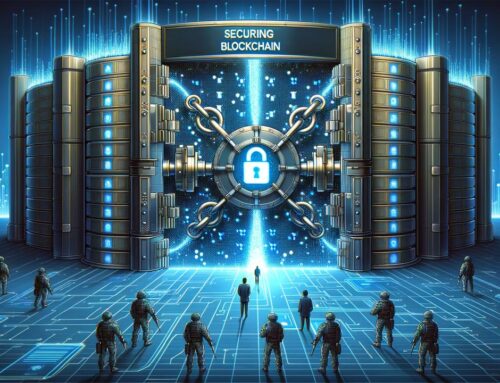
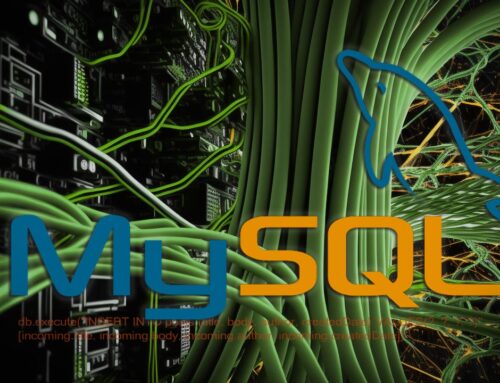
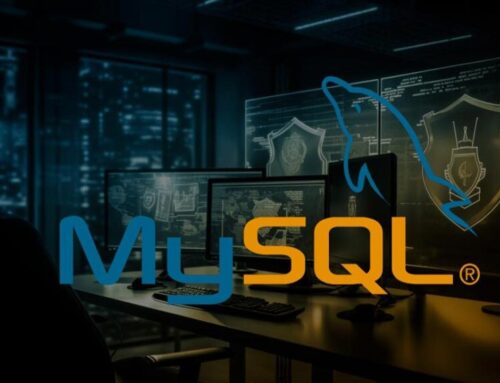
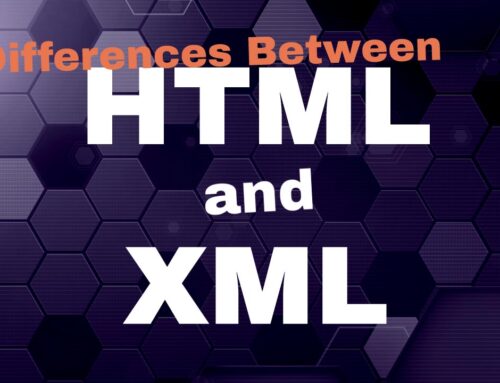
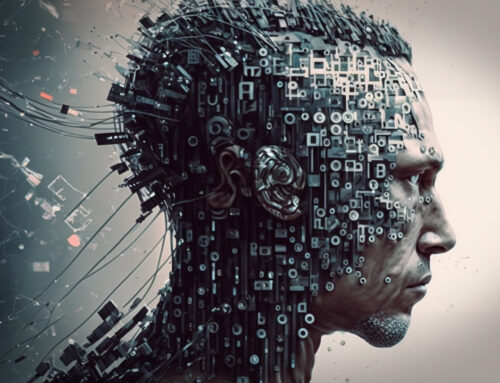


Leave A Comment